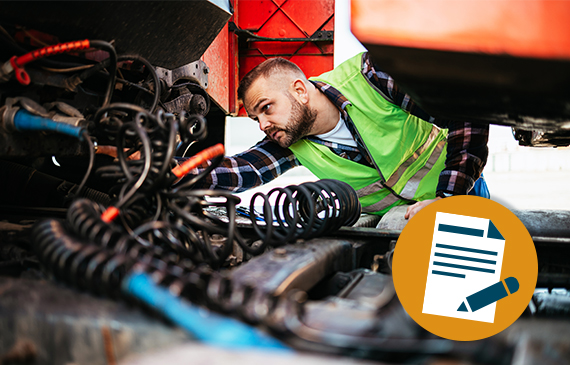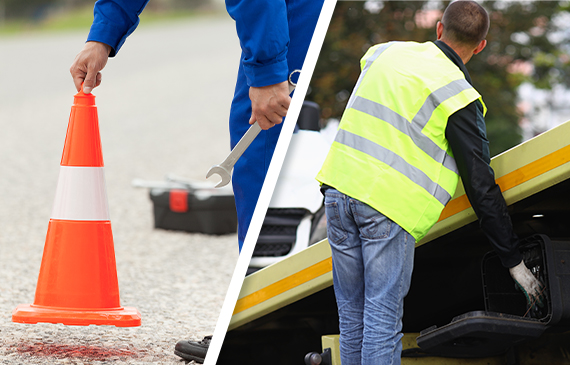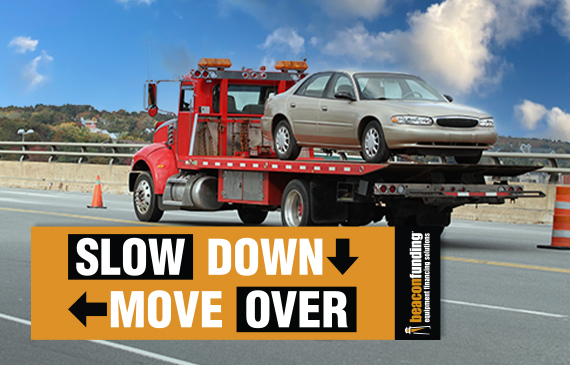Whether you’re a seasoned veteran in the tow truck industry or a newcomer looking to fortify your fleet’s safety measures, this article is your essential guide.
In the world of light-duty towing, safety is paramount, and it’s crucial to address the common challenges professionals encounter in this sector. So, fasten your seatbelts and join us on this informative journey as we delve into the key safety issues faced by light-duty tow truck operators and provide actionable solutions to pave the way for a secure and worry-free work experience.
In this article…
- Common Issues & Solutions with Light-Duty Truck Safety
- Operator Safety Tips
- Honoring Slow Down Move Over Awareness Month
Common Issues & Solutions for Light-Duty Truck Safety
Exceeding Equipment Ratings
Problem: When towing equipment is not rated to handle the trailer's weight, it can lead to engine overheating, tire blowouts, and engine failure. Additionally, if the cab and chassis are not strong enough to support the weight of the trailer, it can lead to the frame of the vehicle becoming deformed and unsafe.
Solution: Operators should always adhere to manufacturer specifications for towing equipment and cab & chassis ratings. Ensure that the truck’s towing capacity is not exceeded, and educate drivers about the importance of following these limits. This prevent vehicle strain and safety hazards.
Lack of Secondary Attachments
Problem: Neglecting secondary attachment chains (safety chains) or straps is another common oversight. These elements are vital for ensuring that the towed vehicle remains securely fastened during transport.
Solution: Emphasize the mandatory use of secondary attachment chains (safety chains) or straps when towing vehicles. Conduct regular inspections to verify that these attachments are in proper condition and properly secured. This will prevent the towed vehicle from coming loose.
Absence of Tow Extension Lights and Traffic Signage
Problem: Properly alerting other road users is essential. Failing to utilize tow extension lights or traffic signage can result in accidents or confusion on the road.
Solution: Make it a standard operating procedure to use tow extension lights and traffic signage when towing vehicles. Ensure that all operators are aware of the legal requirements for proper warning devices and regularly inspect and maintain these components to keep them functional.
Inadequate Steering Wheel Securement
Problem: Improperly securing the steering wheel of the towed vehicle can lead to unexpected and dangerous movements during transport.
Solution: Train operators on the proper techniques for securing the steering wheel of towed vehicles. Use reliable and tested methods, such as steering wheel locks or straps, to prevent unexpected movements during transport. Regularly check and reinforce steering wheel securement during transit.
Towing Damages
Problem: Towing-related damages often occur due to improper equipment use, inadequate maintenance, or lack of training. These issues can result in costly repairs and accidents.

Solution: Establish a rigorous training program for operators that covers equipment use, maintenance, and towing techniques. Encourage regular vehicle inspections to identify and address potential issues early. Ensure operators know proper towing procedures to prevent damage and accidents.
Operator Safety Measures
Problem: Operators must prioritize their own safety. This includes using the non-traffic side of controls, donning Ansi-Class 3 Hi-vis safety gear, and employing cones and/or flares, especially in areas with limited visibility.
Solution: Prioritize operator safety by implementing the following measures:
- Use the non-traffic side of controls to reduce exposure to passing vehicles.
- Mandate the use of ANSI-Class 3 Hi-Vis safety gear to enhance visibility.
- Deploy cones and/or flares, especially in areas with limited visibility, to warn oncoming traffic of potential hazards.
- Provide ongoing safety training to ensure operators are well-prepared for various roadside scenarios.
Efficiency and Time Management
Problem: Lastly, it’s crucial for operators to work both safely and efficiently, minimizing their time spent on the side of the freeway. This reduces exposure to potential risks associated with roadside assistance.
Solution: Balance safety with efficiency by implementing the following strategies:
- Develop standardized procedures for quick and safe operations.
- Encourage operators to use technology, such as GPS and traffic apps, to plan routes and avoid congested areas.
- Invest in well-maintained equipment to reduce breakdowns and delays.
- Promote a culture of time management that prioritizes safety while minimizing the time spent on the side of the freeway.
By addressing these common issues with appropriate solutions and incorporating them into your light-duty truck safety program, you can ensure safety, reduce risks, and improve overall operations. Regular training, equipment maintenance, and adherence to safety protocols are essential to mitigate potential hazards in this field.
Operator Safety Tips
Ensuring your safety as a tow truck operator is paramount. Here are some essential safety guidelines to follow while on the job:
Regular Vehicle Inspection: Before hitting the road, thorough inspect your tow truck. Check for any mechanical issues, brake problems, or other potential hazards. Ensure all equipment, including cables, connectors, and winches, is in excellent working condition.
Proper Attire: Wear the appropriate personal protective equipment (PPE) to maximize visibility and safety. This includes high-visibility clothing, suitable footwear, and gear suited for the prevailing weather conditions.

Visibility on the Scene: Make yourself highly visible while working on the scene. Use reflective vests and ensure your tow truck is well-lit with its hazard lights on. Drive cautiously around the scene, taking extra care to avoid sudden movements.
Safety Gear: Always carry essential safety gear with you. Road flares, reflective triangles, or reflectors can warn other drivers of the potential hazard. Additionally, carry communication devices and extra safety apparel in case of unexpected weather changes or emergencies.
Adhering to these safety tips can minimize risks and ensure a safer working environment for yourself and those around you. Remember, your safety should always be a top priority when responding to roadside emergencies.
Honoring Slow Down Move Over Awareness Month
Towing operators are everyday heroes who face challenging and often perilous conditions in their line of work. They rush to accident scenes, contend with adverse weather, and handle stressed-out motorists, all while striving to clear roads safely.

By honoring Slow Down Move Over laws required in all 50 states, motorists can help keep tow operators safe while acknowledging their dedication and emphasizing the value they bring to our communities.